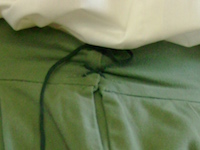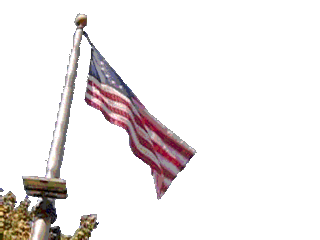- Details
-
Written by Daniel Ortoleva
Coloring colonial clothes and dyed with herbs & flowers

laced pants
History is not limited to a time when women's dresses were longer than the men's pants. The modern zipper is less than 100 years old. Colonial era pants had buttons in the front with the size adjusted using laces in the back instead of a belt and buckle which were decorative items on hats and shoes. The early Puritans wore black but dyes using clay and every part of plants such as the leaves, berries, nuts, flowers, bark and roots created a variety of colors from yellows and blues to deep maroon for colonial clothing. Although a common plant color, green faded easily requiring combinations such as yellow followed by blue to create it. Plant based dyes may not match from batch to batch often involving several dunkings to achieve the desired color. There are many resources available online and demonstrations are occasionally held at local historic gatherings.


